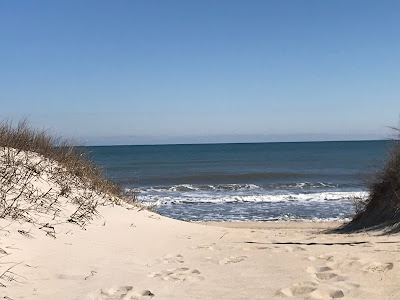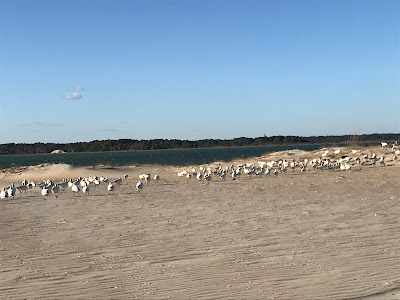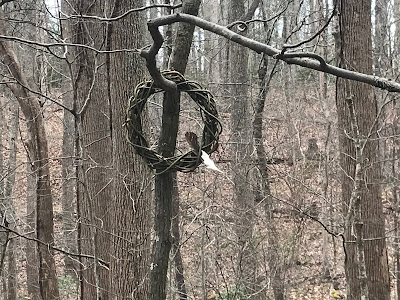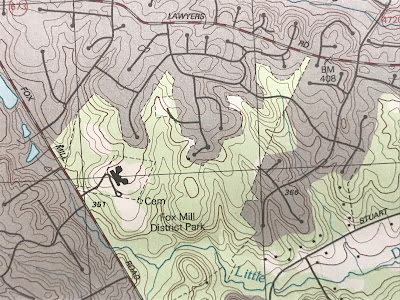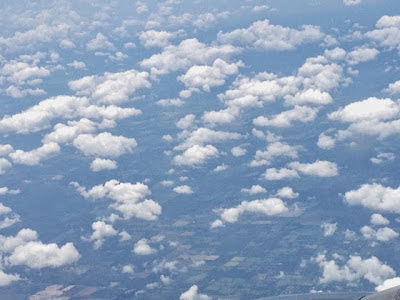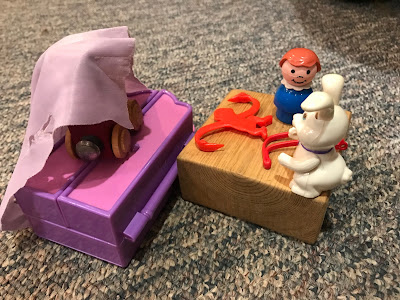When my children were young, I would often end the long days by trying to clear a path to the couch to read or relax for a few minutes before sleep. Often, though, the couch would be occupied.
It might be a stuffed bear, rabbit and dog having tea. Or a bevy of Barbies strutting their stuff. Whatever it was, I hated to dismantle it. I’d been so busy all day doing my job that I hadn’t had time to appreciate the work my girls were doing, play being the work of childhood. But the little scenes were so dear that I knew I would never forget them.
Now we’ve come full circle. It’s my girls who are coming upon these sweet reminders of their children’s play. Except when the toddlers are over here, which they were yesterday. When I went down to the basement after the flurry of departures, I found a little something the kiddos left behind.
I’m not sure what’s going on in this tableau, other than knowing it includes a block, a plastic rabbit, Playmobil girl, tiny doll wardrobe on its side covered with a piece of lavender fabric, and red plastic monkey from a game we once had called Barrel of Monkeys. Needless to say, I couldn’t dismantle this right away —and I took a picture before I did.
